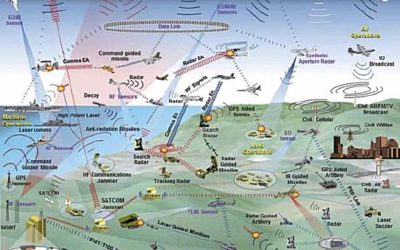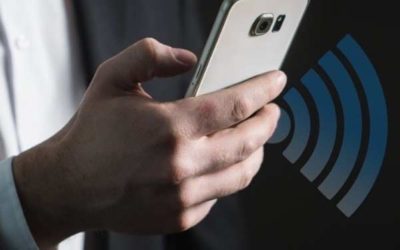In less than two years, the FCC will have conducted four auctions for 5G band sell off to the telecom industry (see Auctions 103, 105, 107 and 110). Auction 107 alone raised $81B for the United States Government (USG). The telecom industry wouldn’t be scrambling to acquire (and pay that price for) more spectrum if they didn’t perceive that the EMS is a finite resource. They recognize they need to capture more spectrum, and they are willing to pay big dollars to acquire as much of it as they can. Even the promising 5G technology will not accommodate the expected demand (500 billion devices by 2030). While this may seem like a good thing for all involved, it really isn’t. This sell-off will take more electromagnetic spectrum (EMS) away from the DoD, which means it will leave our military with very little EMS to test and train, a.k.a, protect our nation.
Selling off spectrum relegates the EMS as a commodity to be bought and sold to the highest bidder. Treating this finite resource this way will ultimately not serve the social obligation to provide EMS to every user on the planet. It will also not enable the DoD to reformulate fast enough to redesign its systems to operate in other bands and still provide adequate national defense. There is a better idea.
We need to come up with new ways to share spectrum, not sell it. I don’t mean, “This is my spectrum, and I will share it with you,” but rather, have multiple user groups (e.g., DoD, telecom, other) utilizing the same spectrum without interfering with one another. The FCC could maintain ownership, keeping the uses neutral and mitigating conflict and overseeing efficient policy for operation. That would be keen.
How could this outcome be realized? By incentivizing the R&D powerhouses (like the telecoms, Amazon, Google) to come up with ways to use spectrum so they don’t interfere with what is already operating in the bands of interest. These are called, Electromagnetic Protection features. The telecoms and Amazon/Google have 100 times the resources that the DoD or the USG do to perform such research – let’s put our money where the power is. When the R&D gets done to discover and develop new ways to access the spectrum that dispel conflict and congestion, then the DoD can leverage those solutions to maximize their use of spectrum for national defense. True enough, this wouldn’t raise billions of dollars for US Congress, but if our country is destroyed, there won’t be a Congress to need it.
Something to think about: Currently, the RF protocols for transmission are modeled after the legacy “Fourier Transform;” an early 19th century mathematical theory and definition that models continuous time signals using constant power, periodic sinusoids (i.e., sine waves). Did you ever stop to ask yourself why this method still prevails? I will answer that question in an upcoming blog, but in the meantime, consider this: the reasons why the FT was rose to the top in the 20th century for wireless transmissions do not hold anymore. There are other ways…just sayin’.





0 Comments